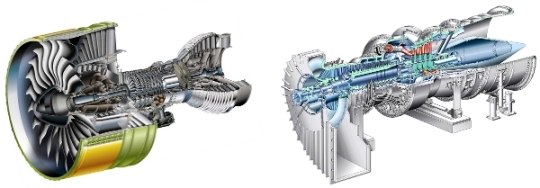Flight Propulsion 1 and Gas Turbines

Winter Term
Lecturer: Prof. Dr.-Ing. Volker Gümmer
Tutorials: Simona Rocchi & Guilherme de Mendonca Luz
Target Student Group: Students of the aerospace master program and people from other engineering master programs
Important information: Beginning from the winter semester 2019/20 the lecture will be taught in English
General information:
- Master module with 5 ECTS
- Lecture (2 semester hours) during winter term
- Exercise class (2 semester hours) during winter term
Content:
- Introduction
- Classification and scope of thermal engines
- Principle of continuous and intermittent
- generation of work; architecture of a gas turbine
- insight into market situation
- history of flight propulsion
- Thermodynamic cycle and gas properties
- Thermal and energetic states
- Laws of thermodynamics
- Enthalpy and entropy balance
- Isentropic and polytropic change of state
- h-s-Diagram, Divergence of lines of constant pressure, total and static states
- Joule-Brayton process: Calculation, optimisation with regard to thermal efficiency and work output, process parameters, limitations
- Flight gas turbine process control
- Constraints of aero engines
- Station Identification
- Thermodynamic cycles of different aero engine configurations
- Thrust equation
- Power output and efficiency
- Engine design and optimisation
- Stationary gas turbine process control
- constraints of application and types of stationary gas turbines
- Station Identification
- Thermodynamic cycles of stationary gas turbines
- Impact of recuperator, inter-cooling and sequential combustion
- Compressor
- Basics of gas dynamics
- Requirements and functions
- Thermodynamic process of compression
- aerodynamic conditions in meridional plane/surface – comprehension of absolute and relative frame
- Velocity triangles; Euler equation of turbomachinery, ideal stage characteristics
- aerodynamic instabilities (rotating stall, surge)
- Measures for stability enhancement
- Turbine
- Requirements and functions
- Importance of turbine entry temperature (TET) necessity of blade cooling
- Types and engineering design of cooling
- Mechanical and thermal capacity in dependence on used material
- thermodynamic and aerodynamic conditions
- Combustor
- Requirements and significance for the thermodynamic cycle
- Thermodynamic basics of combustion
- Design of combustion chambers and their pros and cons
- Concepts of low emission combustion
- Cooling of combustion chamber
- Importance of the temperature profile at the combustor exit
- Thrust and power output
- Turbojet, Turboshaft, Turbofan, Thrust variation, Thrust map
Contact: VL-FA1.ltf@ed.tum.de
Current information and dates can be found in TUMOnline.